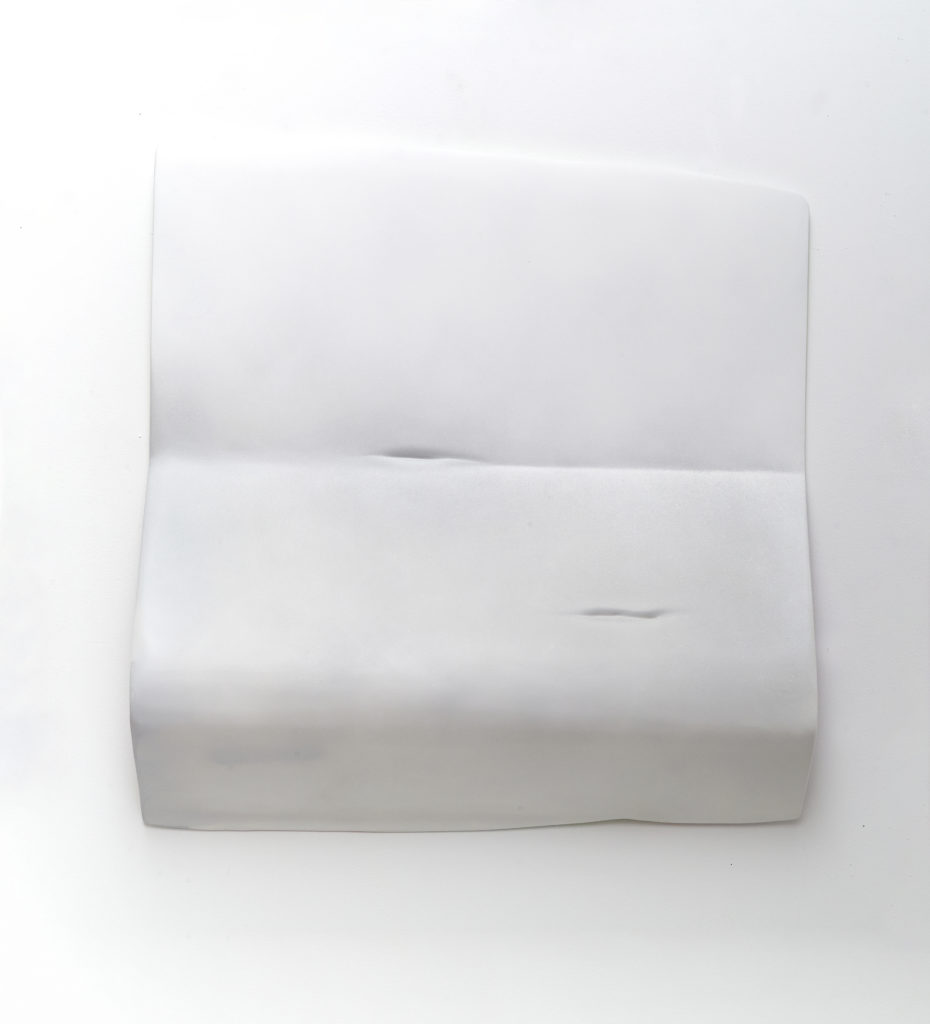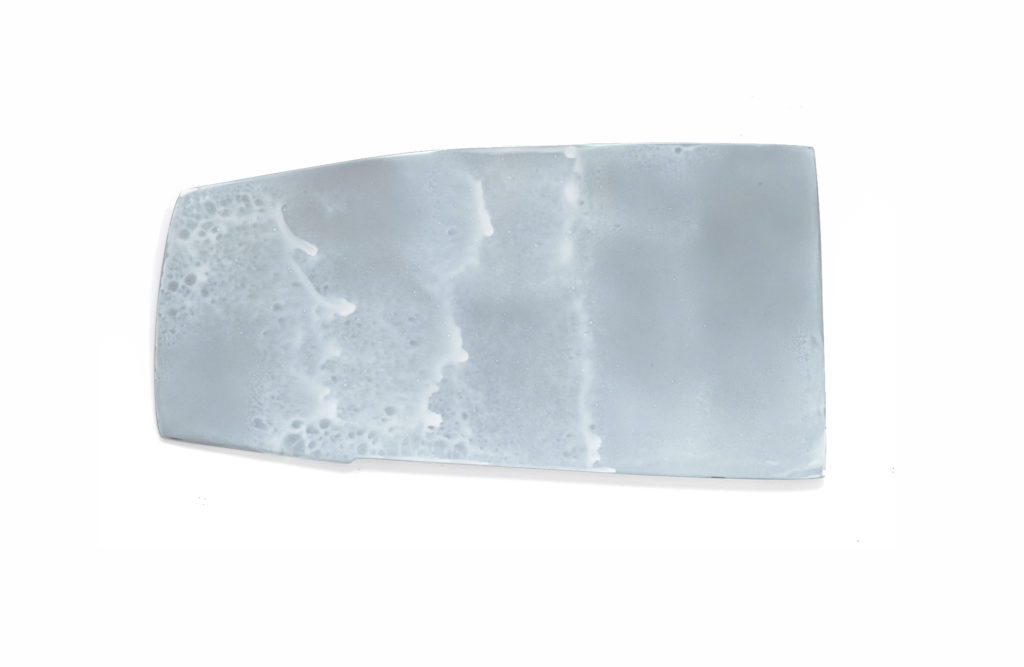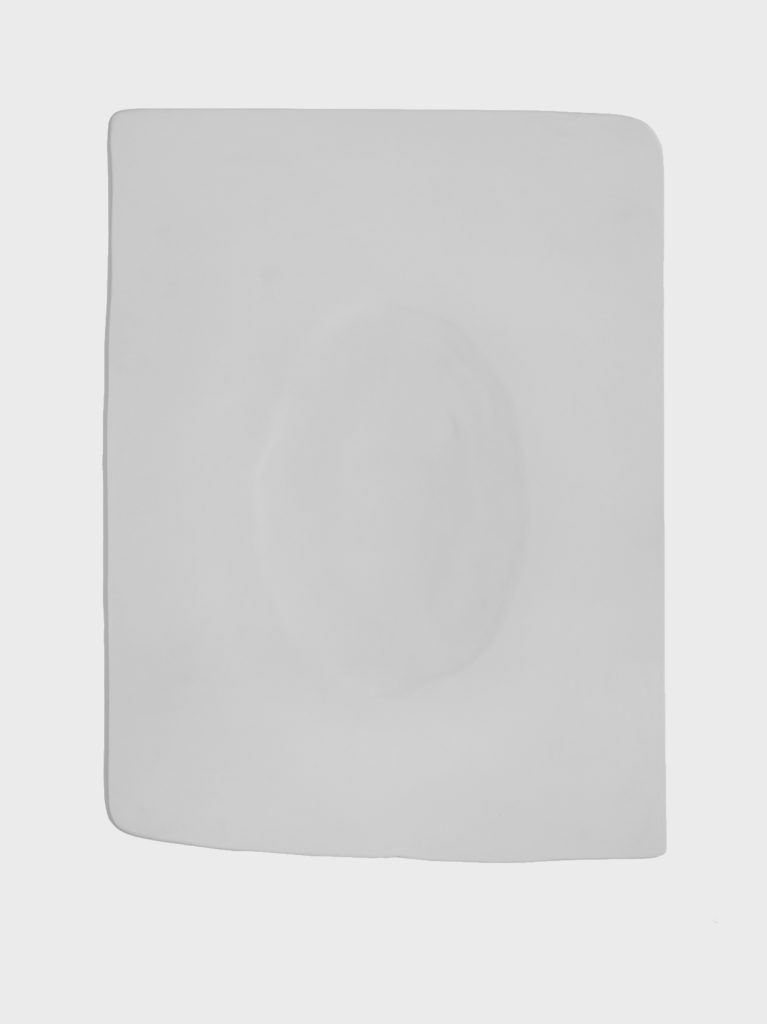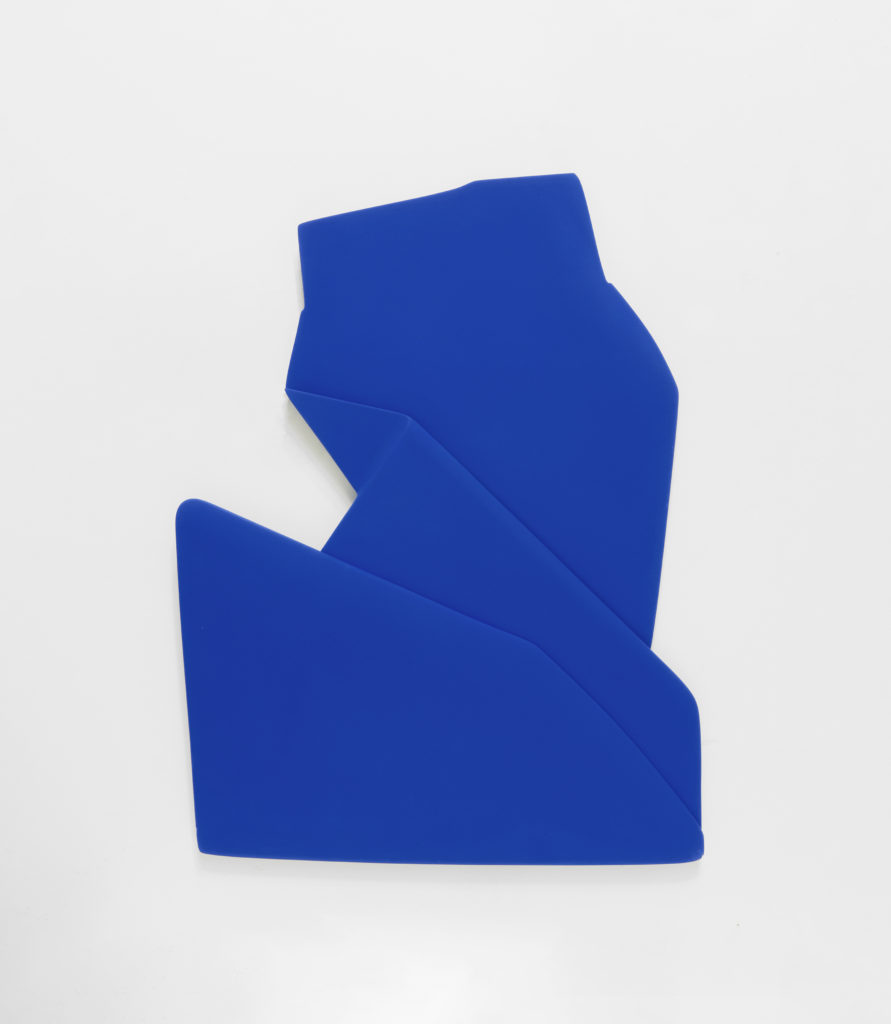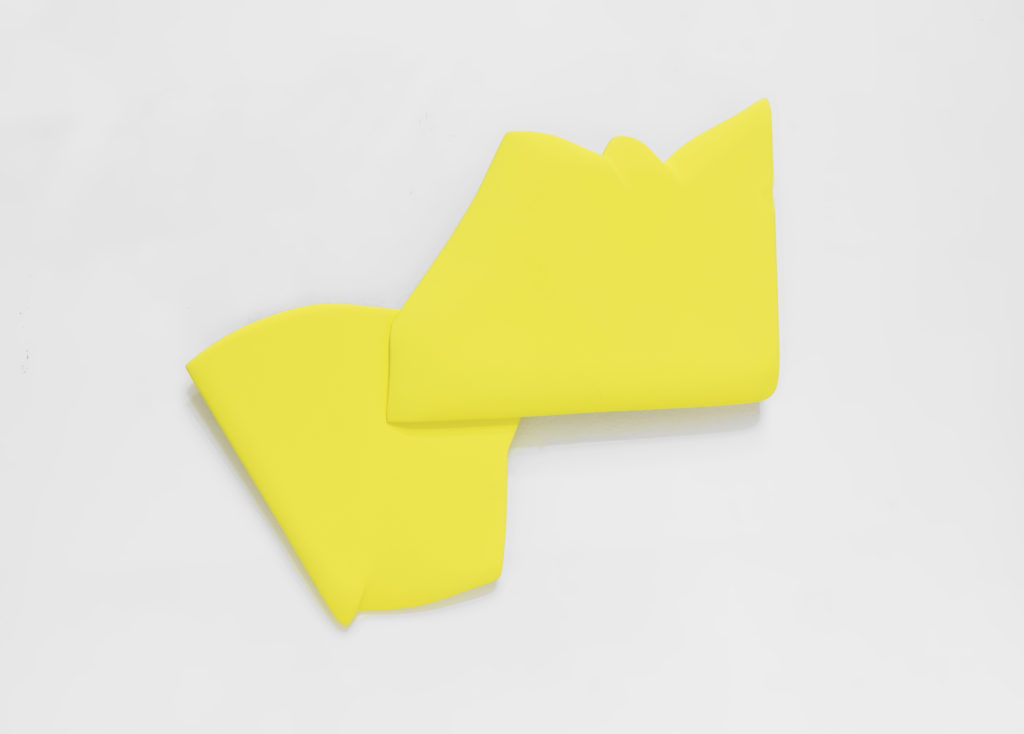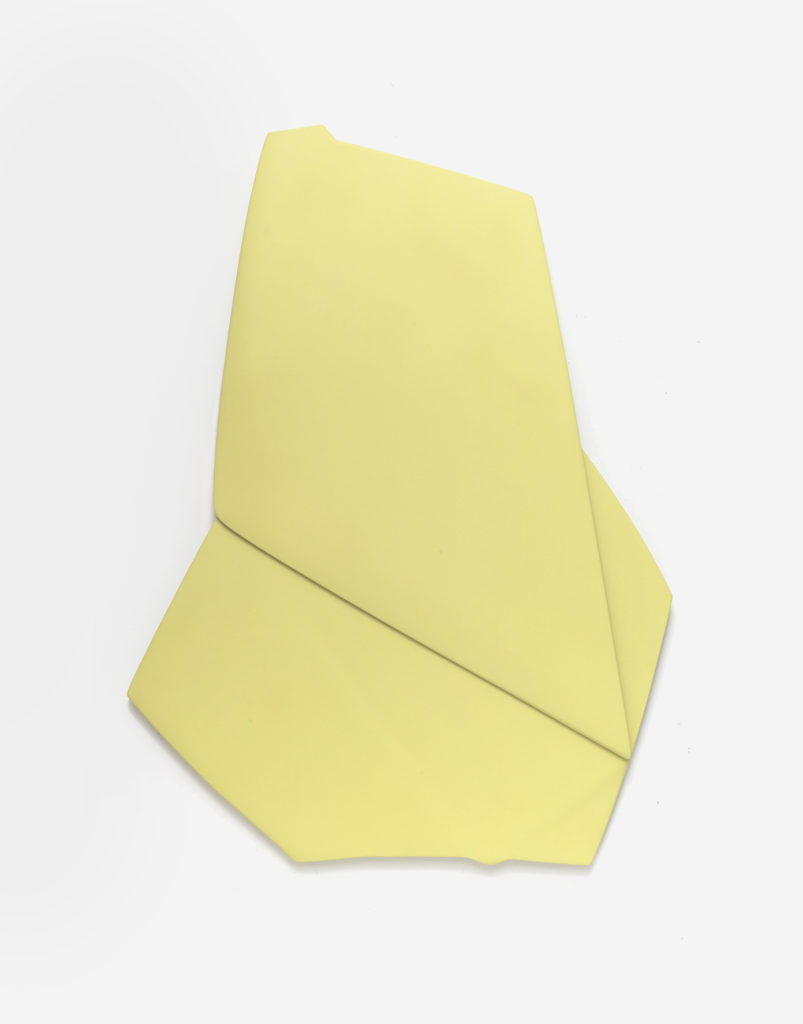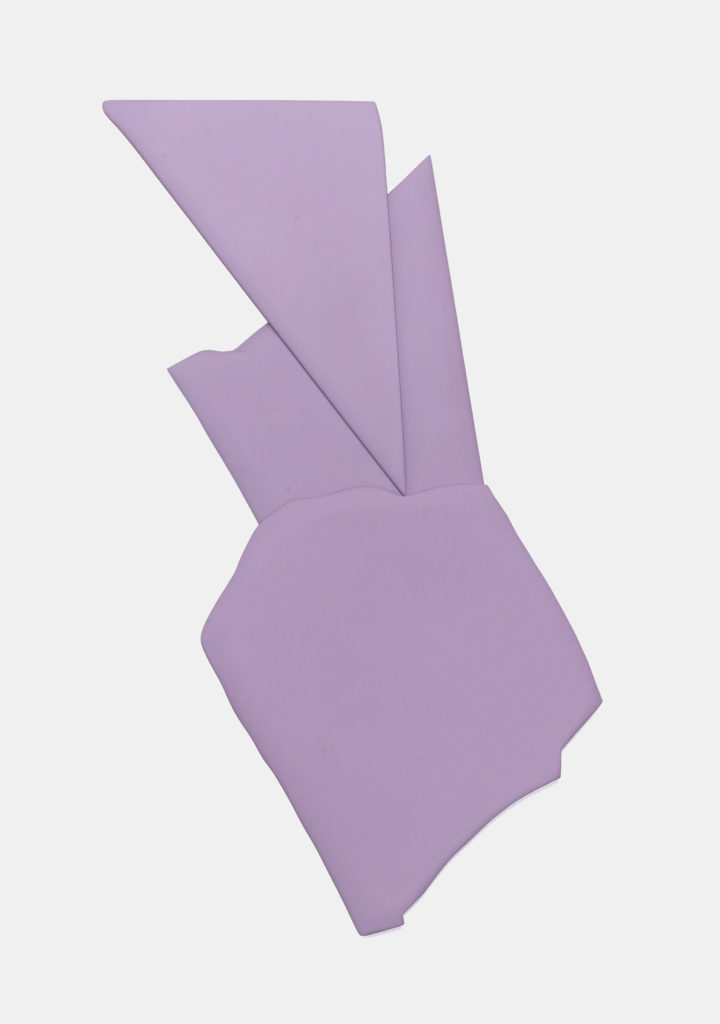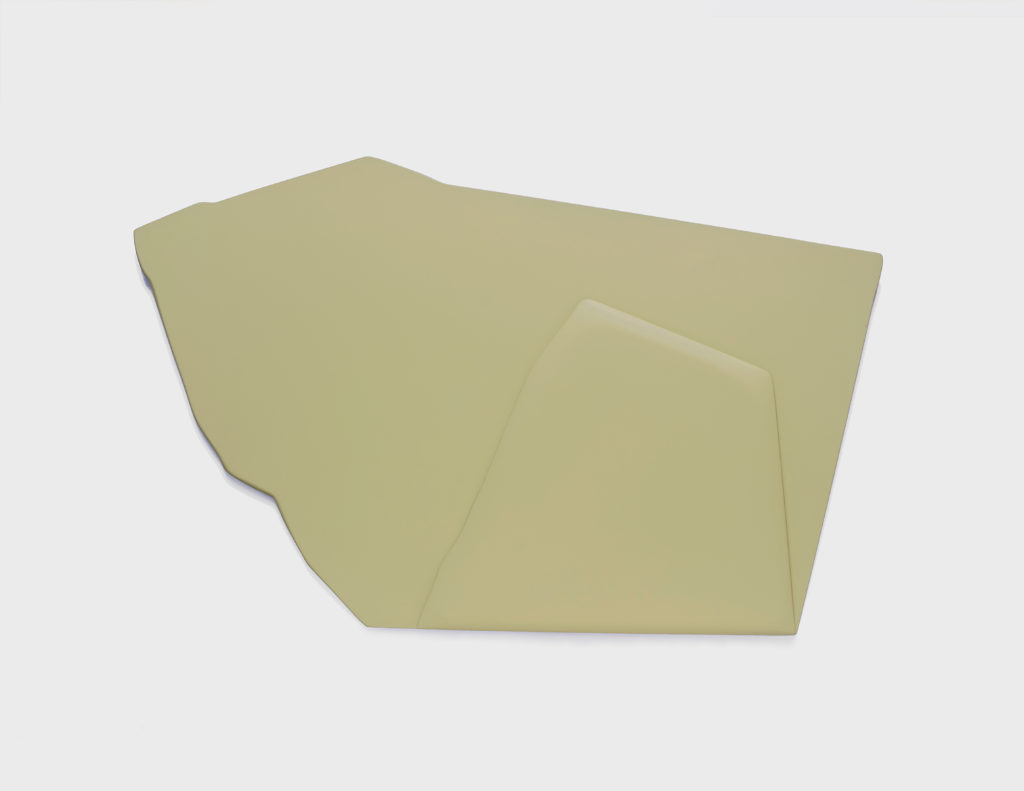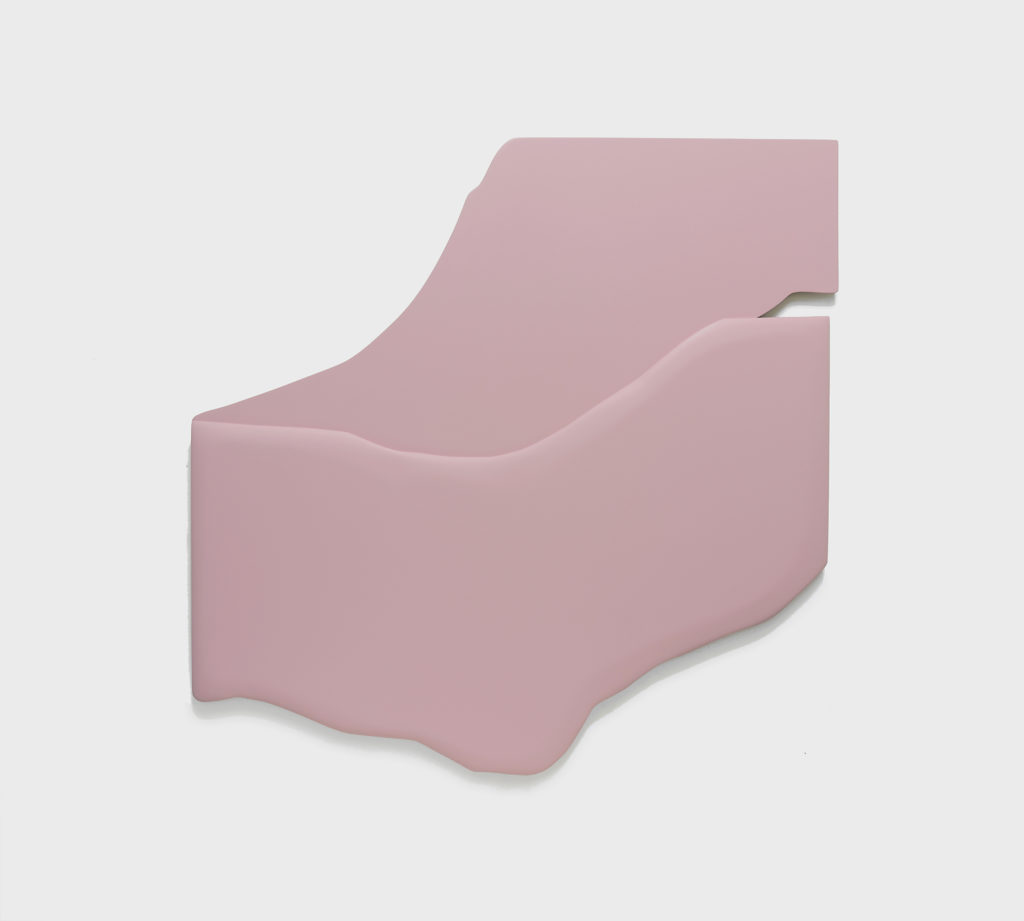Fold, Illuminated
Jaena Kwon
8 November-16 December 2018
Jaena Kwon made a drawing at the door, standing, envisioning how one would move in the gallery space. She drew the line of one's movement in the space, rotated the drawing by 90 degrees, and flipped it, shifting its axis, by another 180 degrees. Then she started to fold the drawing. In her drawing, there were windows (being a source of light), and structural columns indicated, like a floor plan. She connected the points of existing architectural features with the expected trajectory of one's movement and folded. Repeated folding, unfolding, and overlapping began to create certain forms. Not flat forms but three-dimensional forms. The next day, she came with cardboard and started to build models. Several hours later, five, seemingly random, volumes were created. Upon the wall, the masses seem to take a dramatic stride on the wall. Or a slide on a halfpipe, a ride on a huge wave. As Deleuze once said of surfing, these forms seemed to "take the form of entering into an existing wave…. The key thing is how to get taken up in the motion of a big wave, a column of rising air, to 'get into something' instead of being the origin of an effort." They seem to have walked right into the space, taken up by the space, got the light on their white surface, and been ready to get intermingled with the air outside.
Jaena Kwon's interests in painted objects and shaped canvas stem from a discontent with the condition of painting, not much different from Judd's. As Judd said, "The main thing wrong with painting is that it is a rectangular plane placed flat against the wall." Growing up playing with origami and pop-up books, Kwon has been using folded paper as a medium and methodology. By doing that, she diligently challenges what constitutes the painting, the construction of the painting space, color, texture, and light. And ultimately the expansion or transcendence of painting is in flux with its surroundings, including the viewers. Kwon says "The idea is to create a static but interactive form that incorporates the viewer's bodily presence in order to include the viewer and space into the realm of the work." Kwon seems to understand the human body is soft, elastic, and curved. "The curvature of the universe is prolonged by the fluidity of matter, the elasticity of bodies, and motivating spirit as a mechanism." When I first saw Kwon's piece Deepening it Out, which is white, protruding, and amorphous, I thought of some ancient beast's teeth. Or a form of the future dwelling. It turns out that the drawing came from two-point perspective drawings seen from three different viewpoints. Perspective was first invented to give the viewer a sense of space, a sense of depth on a flat picture plane. To Kwon, the depth is not just the deepness of space, but an amorphous, infinite state experienced from different angles, at different times. The drawings from perspective could eventually become something unexpected, something that evokes past and future simultaneously.
On a flat surface, the shortest path between two points is a straight line, but on a curved space, the shortest distance between two points is actually a curve, technically known as a geodesic. What if we folded a piece of paper or space? Two points become one, and the distance becomes zero. Physics becomes Zen. Kwon repeatedly folds these points to see how the subject and surroundings are interrelated and materializes their interaction. Sometimes she flattens what initially had a volume to resemble the state of painting, other times she transforms a single line drawing into a group of three-dimensional forms. She keeps searching to see how we reside in space and time in relation to the problems of painting. For this exhibition, she contemplates the color white, ranging from Moon Jar to clouds to a spaceship and to a beginning. To see the light on the work, to see more colors glistening in white, to see how all is illuminated.
